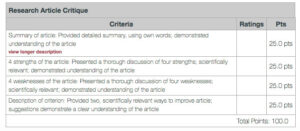Comparing Alcohol with Religious Aspects

Article Review: Psychology
Identification with a religion organization has proved to reduce alcohol consumptions among college students. However, most of the students involved in the article fail to satisfactorily draw a line between religiosity and spirituality and given the dynamic aspect of religion in America. This could be construed as a potential problem in the study. The article seeks to present the differences between identifying with a religion and assuming spiritual mindsets among the college students. In a modified presentation of the Core Alcohol and Drug Survey, the study is carried out on a virtual platform with a sample of 2,312 college students1. The study proves the hypothesis that self-proclaimed religious and spiritual students substantially took different positions with respect to religious customs, consumption of alcohol, and the postmodern societal virtues
The book has succeeded in presenting the differences between self-identified religious and spiritual students, a challenge that has for the longest time proven to be significantly farfetched in other similar research works. Besides, being religious or spiritual has also been associated with the adoption of more health sensitive measures on the part of the students and greatly reduces alcohol consumption among the college students2. To get reliable results, the study has sampled the participants from some five distinct groups: religious, spiritual, agnostic, atheist and other. Furthermore, just like clockwork, the results, which match the 2008 Core Alcohol and Drug Survey, though partly, prove that most of the college students in the sample claimed to have belonged to a religious or spiritual set up3.
Nonetheless, the study was only localized on a single university which would raise questions about the authenticity of the study as it were. Additionally, the enrollment of new students in the university was negligent compared to the population of students of the upper levels which translate into an unreliable record of alcohol consumption going by the fact that alcoholism is synonymous with a young age. Moreover, the study was probably carried out within the confines of the 2008 Core Alcohol and Drug Survey and thus circumvents the real reflection of the dynamism on the ground4. Furthermore, the study prompts were relatively few with limited response avenues and though this expedited the research, it reduced the precision of the results. By and large, the study would have presented even better findings and conclusions if it was done across different universities with a substantial homogeneity in age among the students. With this in mind, the self – report survey should feature more items with relatively more room for the feasible general response options5.
Notes
1 Burke et al., Re-examining religiosity as a protective factor, 2
2 ibid, 4
3 ibid, 5
4 ibid, 7
5 ibid, 10

